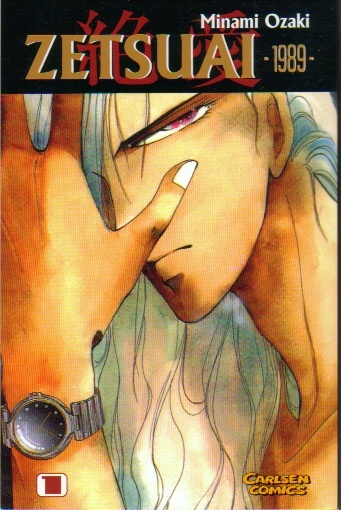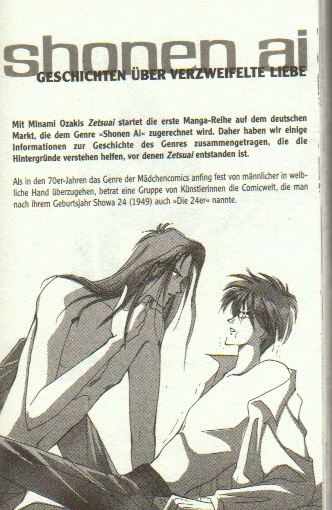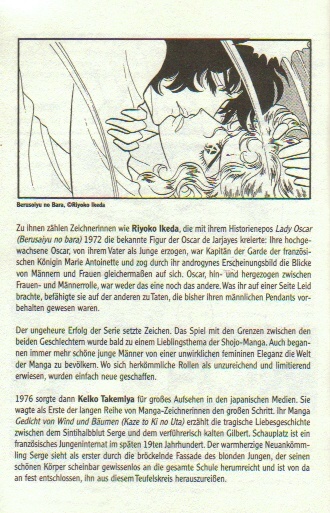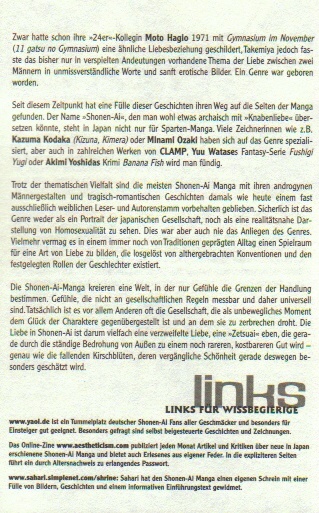Article in Zetsuai German version

Thank you for the translation, Nico!
 |
Shounen-ai - stories about desperate love
|
|---|
 |
Among those artists was, for example, Riyoko Ikeda, who in 1972, created
for her historic epos Lady Oscar (BnB) the well known character Oscar de
Jarjays: Ikeda's Oscar, raised as a boy by her father, was Captain of the Guarde of
the French queen Marie Antoinette and was, because of her androgynous
look, equally admired by men and women. Oscar, divided between her role as
being man and woman at the same time, was neither fully one or the other.
On one side this brought her pain, but it also enabled her to do things,
which were until then exclusively for men.
|
|---|
 |
Even though her "group of 24"-colleague Moto Hagio had, in 1971, with
"Gymnasium in November" (11 gatsu no Gymnasium) already told a similar love
story, Takamiya took the until then only playfully suggested theme of love
between two men and put it into unequivocal words and gentle erotic images.
A new genre had been born.
|
|---|